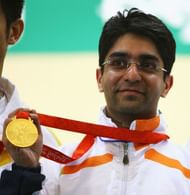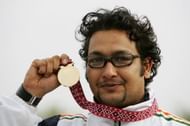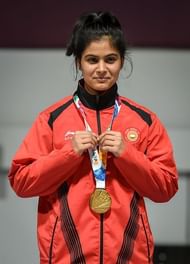In the Olympics Games, the sport of shooting has been India's most productive event in the last 2 decades. It has given India as many as four Olympic medallists, including it's first ever individual gold medallist - Abhinav Bindra. It has produced many champions both in the pistol/rifle events as well as in the shotgun events, viz. Abhinav Bindra, Gagan Narang, Rajyavardhan Rathore, Vijay Kumar, Anjali Bhagwat, Ranjan Sodhi, Manavjit Singh Sandhu and Jitu Rai. Although India had been producing many champion shooters across various disciplines for quite sometime, but as a nation, it was not a shooting powerhouse like China.
However 2019 has been the watershed year for Indian shooting. India topped the combined medals tally in the World Cup events of 2019. They won as many as 19 gold medals in the various International Shooting Sport Federation (ISSF) events in 2019 alone, which is an unbelievable achievement, considering the fact that they had won only 17 gold medals in the previous 9 years combined.
This miraculous rise has been possible because of various factors. In this article we shall try and look at the important factors which contributed to India's rise as a shooting superpower.

Increase in talent pool and popularity of shooting
In a cricket crazy country like India, Olympic sports like shooting always took a backseat. However Abhinav Bindra's gold medal winning performance in the 2008 Beijing Olympics suddenly made shooting very famous in India. Shooting ranges and private coaching centers sprung up in all the major cities of India. Parents of various economic background started enrolling their kids in these shooting centers for training. This helped in increasing the talent pool. The access to the game was no longer restricted to army officers and rich people. It became accessible to the common people and young kids in school.
This positive change reaped dividends in a decade's time, when young shooters like Apurvi Chandela, Manu Bhaker, Saurabh Chaudhary, Mehuli Ghosh, Abhishek Verma and many others came up from different parts of the country and from different social and economic backgrounds to become world-class shooters, winning medals in international events.

Better infrastructure and coaching facilities
Another positive change has been the betterment of infrastructure and coaching facities. The generation of shooters who represented India in the 1990s and the 2000s viz. Jaspal Rana, Gagan Narang, Abhinav Bindra, Rajyavardhan Rathore, Joydeep Karmakar, Anjali Bhagwat, Ranjan Sodhi and the others, did not receive world-class infrastructure and coaching facilities in their formative years. As a result they had to struggle a lot before achieving international success.
But after finishing their careers, these stars opened shooting centers for kids with world-class infrastructure and coaching facilities. This made sure that the next generation of Indian shooters got the best possible guidance in their formative years. In addition to this, stars like Jaspal Rana and Joydeep Karmakar mentored talents like Manu Bhaker and Mehuli Ghosh and helped them achieve international success at a very young age.

Emergence of world-class shooters across various events
In 2019, what has helped India win so many gold medals is the fact that it could produce champions across various disciplines of shooting, be it 10m Air Rifle, 10m Air Pistol, 25m Rapid Fire Pistol, or Trap events, in both men's and women's division. India has also been excellent in the newly introduced mixed team events, where they have managed to win more medals than any other country in the world.
The consistent medal winning performances of young sensations like Manu Bhaker, Saurabh Chaudhary and Abhishek Verma in 10m Air Pistol, Elavenil Valarivan, Apurvi Chandela, Anjum Moudgil, Divyansh Singh Panwar and Mehuli Ghosh in 10m Air Rifle, Rani Sarnobat in 25m pistol and Kynan Chenai in trap events has made India a powerhouse in the game of shooting and the favourite to win the maximum number of gold medals in the upcoming 2020 Tokyo Olympics.
